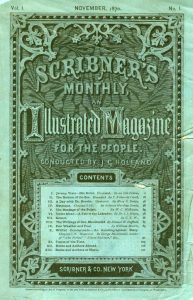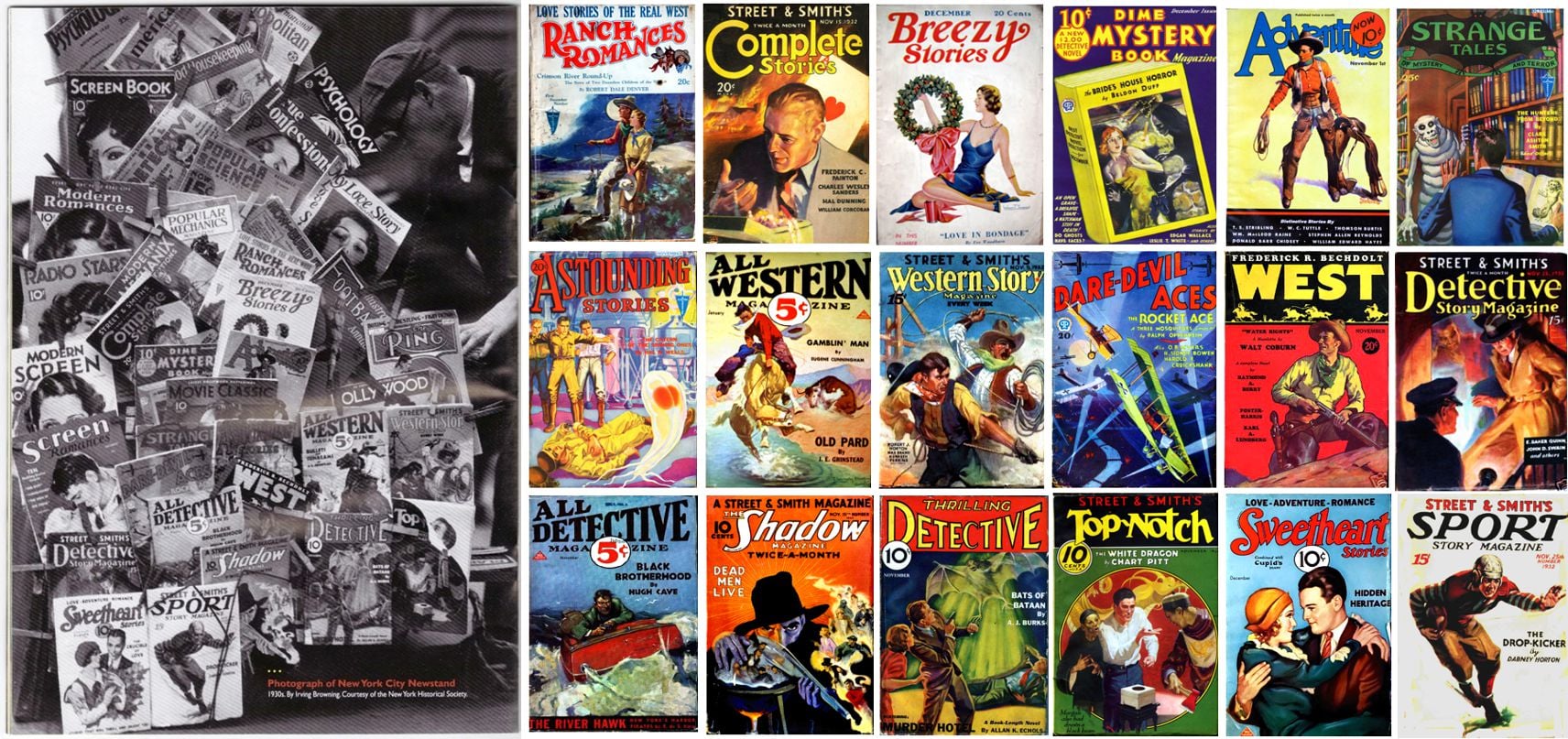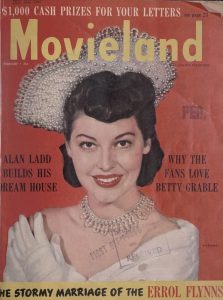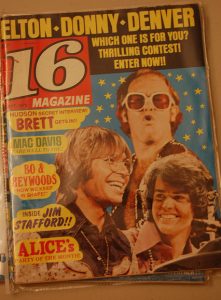5.3 The Role of Magazines in the Development of American Popular Culture
Due to the significant costs associated with printing and mailing publications, magazines initially targeted only regional audiences, thereby limiting their ability to influence broader audiences. Not until these expenses declined and advertising revenues increased could magazine owners justify the cost of mass circulation.
Advertising for a National Market

The late 19th century witnessed a surge in mass circulation for the U.S. magazine industry. This meant that magazines that had once targeted only a small part of the country suddenly began reaching a nationwide audience. In addition to the apparent benefit of increased magazine revenue, this shift to broad circulation caused an interesting phenomenon: the introduction of national trends. For the first time in U.S. history, mass circulation enabled the widespread diffusion and advertisement of news, stories, consumer goods, and fashions to audiences, rather than just regional ones. The mass circulation of magazines united the country, as geographically diverse consumers read the same stories and saw the same advertisements.
Due to this growth in readership, advertisements became increasingly vital to the magazine industry. Advertisers sought to reach a large audience, and magazines willingly afforded them that opportunity, selling advertising space at higher rates. One business manager of Scribner’s Monthly, an early popular magazine, solicited advertisements by discussing the readership boom:
The publishers of Scribner’s Monthly will insert in each number of the magazine certain pages devoted to advertisements of a character likely to interest magazine readers. These will not increase the postage, while significantly enhancing the publishers’ ability to make their magazines readable and attractive. The pressure of advertisements in our first number shows how quickly the business public recognizes the claims of the new magazine. Our edition will be huge, and it will have a national circulation. It is now well understood that a first-class popular magazine furnishes to all men who seek a national market the very best medium for advertising that exists (Ohmann, 1996).
For the first time, publishers and advertisers could access a national market. By the 1930s, market research had become the norm for periodicals, as magazines and advertisers sought to understand better what readers wanted in their publications. However, market research has its limits; many publishers instead embraced the potential of magazines to tell people what they want or need, thus solidifying the role of the magazine as a driver of popular culture. As one editor of Vogue articulated: “If we find out what people want, it’s already too late (Encyclopedia Britannica).”

Popular Literature in Magazines
Magazines offered a place not only for advertisers but also for authors and poets to reach a large audience. Several publications regularly hired both new and established authors to write stories. As circulation increased, so did the desire for these authors to publish their work.
Literary magazines enjoyed a boom during the 19th century, publishing some of the period’s most important fiction. At some point, nearly every important American writer contributed to literary magazines; for example, Edgar Allan Poe, Mark Twain, Walt Whitman, and Ernest Hemingway all published in periodicals throughout their careers. Even writers working outside the country, such as Ezra Pound and James Joyce, sought out U.S. magazines to publish works that faced censorship in their native countries.
Just as magazines offered authors a chance to display their writing to a large audience, they also allowed readers a taste of available literature. Even today, magazines often print excerpts from books, providing readers with a preview of the complete text. Portions of literary classics, including Uncle Tom’s Cabin, Walden, Moby-Dick, The Adventures of Tom Sawyer, The Adventures of Huckleberry Finn, and Ulysses, all made their debut in magazines. Some novels—such as Edgar Rice Burroughs’s Tarzan of the Apes, John Hersey’s Hiroshima, and Ernest Hemingway’s The Old Man and the Sea—even appeared in magazines in full before publication in book form. The opportunity to publish in magazines has provided invaluable opportunities for authors, but literary publications have also proved essential for the development of American culture. In publishing literary texts, journals have promoted now-classic stories, such as the previously mentioned examples, that have defined American literary history and shaped the U.S. narrative.
Pulp Magazines

During the late 1800s, Frank Munsey established a new type of magazine: the pulp magazine, an all-fiction publication named for its rough wood-pulp paper. At the time, dime novels did not qualify for the same inexpensive postal rates that magazines did, but the pulps did. Suddenly, individuals had the opportunity to read popular genre fiction in a low-cost magazine format, such as Adventure, Horror Stories, Startling Stories, and Weird Tales.
The pulps got their start as adventure magazines, but they eventually diversified into several categories, including love, detective, and western. The fiction stories did remarkably well until the mid-1930s, when newspaper comics first offered competition by printing collections on the same pulp paper. In 1937, however, the two genres collided with Detective Comics (where Batman made his first appearance), and the industry experienced a significant boom. Although intended for children, the violent, horror-soaked comics drew a large adult audience. However, the graphic content of the pulp strips caused a stir, with the public divided on the nature of this new media. Defenders of the comics called them harmless, while critics thought they would provoke people to mimic the violent subject matter (Encyclopedia Britannica). Just as legislators struggle today with debates over censorship of TV, music, and the Internet, they did so with pulp comics as well. Child psychologist Fredric Wertham, who alleged that comics led children into lives of crime, encouraged negative backlash against pulp comics (Coville). In response to the controversy, the Association of Comics Magazine Publishers established a Code of Practice in 1948 to regulate the content of pulp comics. Due to lax enforcement, many publishers chose to ignore the code, and thus the controversy continued to rage. When Senate hearings raised the threat of government regulation in 1954, the pulp comics industry opted for self-censorship. As a result, it established the Comics Code Authority to control the material that reached consumers.
Despite the controversy surrounding the magazines, the industry flourished, and eventually, new forms of pulp magazines emerged. Amazing Stories offered science fiction content, and hand-drawn pinups filled so-called “Girlie Pulps,” which found an audience despite experiencing a setback in 1934 when police seized 10,000 copies and burned them. Even though both new genres attracted outcry from the public for their indecency, the pulps continued to grow in popularity. Many have argued that the difficulties of the Great Depression and the uncertainty of a looming world war made 1930s audiences receptive to the entertainment offered by fictional heroes, thereby giving the pulp genre a ready audience.

Entertainment Magazines
The success of the pulps encouraged another major transformation in mainstream journalism: the rise of entertaining fan magazines. Typically focused on television, film, and music, fan magazines emerged as national entertainment during the early 20th century. During the early years of motion pictures, magazines such as Photoplay, Picture Play, Movie Mirror, and Movieland began publication, offering subscribers behind-the-scenes glimpses of well-known films. These periodicals were so successful that, as radio and television gained popularity, similar magazines emerged to cover these new media. Television- and radio-focused magazines also provided weekly timetables of programs for their viewers and listeners. Although the emphasis of the fan magazine has changed over the years, entertainment publications, such as Entertainment Weekly, Rolling Stone, and TV Guide, continue to dominate much of the magazine industry today. In addition to providing entertainment news to readers, celebrities and media producers find the publications useful as a platform to market their new products and services.
Teen Magazines

During the 1940s, many publishers began pursuing teenagers, a previously ignored demographic. Seventeen magazine hit shelves in 1944, setting the stage for later publications such as Tiger Beat and The Teen Magazine. These magazines targeted young women, offering stories on fashion, makeup, celebrity news, and lifestyles. Since their inception, teen magazines have maintained relatively brief articles, instead reaching their target audiences with bright and bold photos. Tiger Beat, for example, offers collaged covers featuring a popular teen celebrity of the moment. Teen magazines influence popular culture not only through their reporting on celebrities but also through their articles on celebrity fashion, which readers use to adopt fashion trends worn by celebrities.
During their early years, most teen magazines targeted readers in their late teens, often offering articles on colleges. Today, however, to reach a wider audience, these same magazines intentionally target the preteen market by featuring younger actors and including more teenage celebrity gossip. In doing so, the magazine industry continues to influence younger and younger audiences, thus making a greater impact on American popular culture.

The Thin Line: Fashion’s Impact on Body Image and the Push for Real Beauty
In 2006, the Madrid fashion show made headlines by banning overly thin models to project an image of beauty and health. According to fashion show organizers, “models had to be within a healthy weight range. That means a 5-foot-9 woman would need to be at least 125 pounds (Hellmich, 2006).” Critics have debated the dangers of featuring thin models since the 1960s when model Twiggy entered the field. Since then, skinny models have ruled the runway despite claims to the contrary: Most American runway models measure within an inch or two of 6 feet tall, but weigh between just 120 and 124 pounds. With images of these models everywhere, many wonder about their effect on American youths, especially teen girls.
Studies have shown that images of ultra-thin models distort women’s views of health and beauty, leading to depression, extreme dieting, and eating disorders. In one study, 69 percent of girls said that fashion models influence their idea of the perfect body shape, even though most models weigh 23 percent less than the average female (Healthy Place). Another study showed that 68 percent of Stanford University undergraduate and graduate students felt worse about themselves after looking through a women’s magazine (Healthy Place). Even more worrisome is the fact that young girls are being negatively affected by the images in magazines. “The number one wish for girls 11 to 17 is to be thinner, and girls as young as five have expressed fears of getting fat. Eighty percent of 10-year-old girls have dieted (Healthy Place).”
Some companies have fought the trend of using super-thin models in their advertising. In 2004, Dove launched its Dove Campaign for Real Beauty; the company claims the goal of the ad campaign is to “help free ourselves and the next generation from beauty stereotypes (Dove).” Dove’s ads feature women of many shapes, sizes, and ethnicities in little more than their undergarments. Dove has stated that it plans to continue using “real women” in marketing campaigns (Morrell, 2007). More recent examples include Aerie, the American Eagle Outfitters sister brand, which launched its #AerieREAL campaign, committing to using unretouched images of their models. Fenty Beauty, launched by Rihanna in 2017, revolutionized the cosmetics industry by making inclusivity its cornerstone by developing 50 foundation shades designed to cater to a vast spectrum of skin tones that were previously underserved by the market. Nike has also made strides in showcasing body diversity and inclusivity in its advertising by introducing plus-size mannequins in their stores and featuring athletes with diverse body types and abilities in their campaigns.
Celebrity Magazines
Celebrity gossip is not just reserved for teen audiences. A stroll through a supermarket checkout lane reveals the vast assortment of celebrity magazines—also known as gossip magazines—that target adults. First popularized during the 1970s, these celebrity magazines offer readers an inside perspective on the lives of the famous. Many magazines publish gossip stories that humanize celebrities by featuring them in a negative light. Despite the best efforts of celebrities and their agents, placement in these magazines can either make or break a celebrity’s reputation and foster considerable drama within the celebrity community. Due to intense competition for stories, celebrity magazines often pay substantial sums of money to celebrities or other sources for exclusive content, including stories and photos. This chapter will discuss celebrity magazines in detail later.

